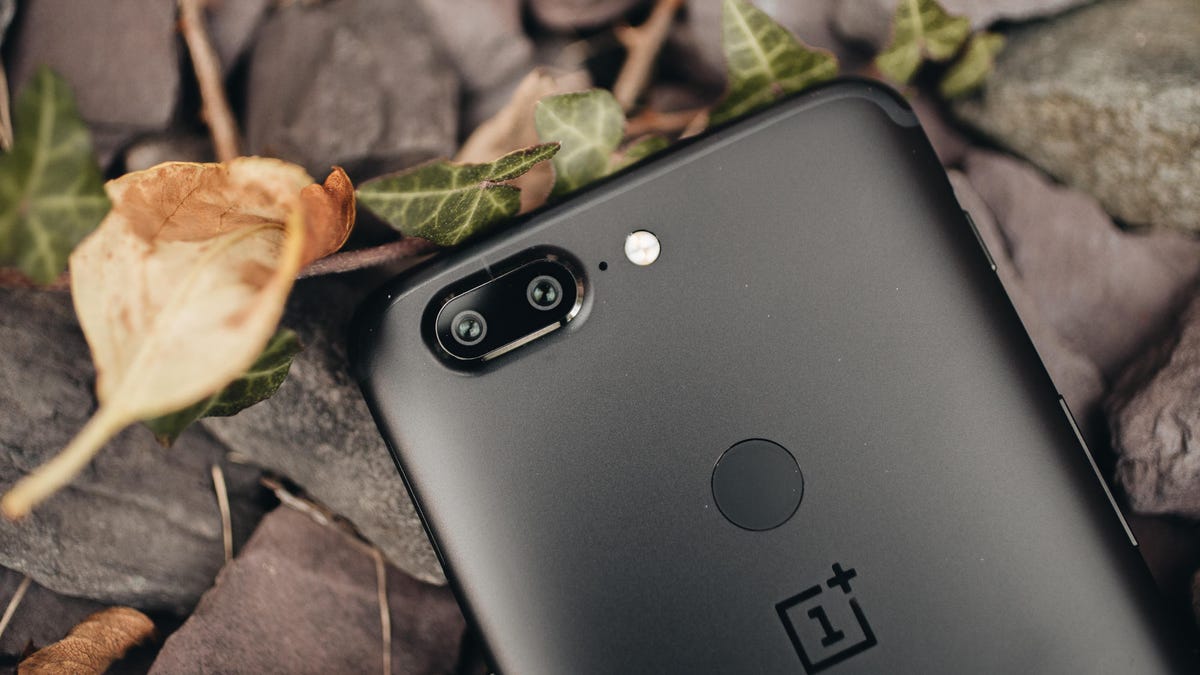OnePlus 5T camera goes up against iPhone X, Pixel 2 XL, Galaxy S8
We find out how the affordable OnePlus 5T's camera fares against its elite rivals.

The lovely screen with skinny bezels is the most exciting update to the new OnePlus 5T , but the camera has seen some tweaks too. The telephoto lens we liked on the standard OnePlus 5 is gone, replaced with a 20-megapixel sensor that helps improve picture quality in low-light situations.
It provides depth information too, letting you snag those portrait shots with a DSLR-style depth-of-field effect.
To see how the updated camera fares against the competition, I went out on a shoot armed with the 5T, the Samsung Galaxy S8 , the Google Pixel 2 XL and the iPhone X .
Below are example shots taken with the OnePlus 5T. You can use the slider to see how the 5T's shot compares with those taken with the iPhone X. Below you'll find links to see the same shot taken with the Pixel 2 XL and Galaxy S8 for comparison. Shots on all phones were taken in fully automatic mode and on the maximum available resolution.
Outdoor leaves
Google Pixel 2 XL comparison image
Samsung Galaxy S8 comparison image
The colours are great in this first outdoor example. There's a satisfying richness to the warm-toned leaves on the ground and the 16-megapixel sensor provides plenty of detail when you zoom in. The iPhone X's shot is a touch warmer, which suits the scene well, while the Pixel goes warmer still, which begins to look a bit over the top.
Wide landscape
Google Pixel 2 XL comparison image
Samsung Galaxy S8 comparison image
There's a great exposure balance in this wide scene overlooking London. The bright sky has been kept under control, with plenty of detail still visible in the shadowy areas below. All four phones did a great job capturing this shot with little to choose between them in terms of exposure.
When you zoom in on the details, it's clear that the S8's image sharpening is working hard to give crisper edges than the others, while the Pixel seems to have missed the focus, resulting in a blurry-looking shot. The S8 has the richer colours too, particularly on the rich blue sky.
That said, there's very little difference between the 5T's shot and the iPhone's . That's pretty remarkable, given the fact that at £449 in the UK, the 5T is less than half the price of the iPhone X.
Portrait mode
Google Pixel 2 XL comparison image
Samsung Galaxy S8 comparison image
The dual lens setup on the 5T aims to produce great portraits with depth of field blur around the subject, but in this test, the phone was a bit of a letdown. The scene is dark, colours drab and with a white balance shift that leaves Carfection's Drew Stearne looking overly pink. Poor guy. The iPhone X went too far the other way, correcting the white balance with a strong shift to warmer colours. I prefer the look of the iPhone, but it's far from accurate. On the upside, the depth information provided by the dual lenses on both phones have given neat "cut outs" around Drew to accurately produce the background blur.
The Pixel's shot is the best here in terms of lighting and colour, but the single lens means the blur effect is entirely simulated by the phone and it's not as neatly done. The same goes for the S8, with noticeable patches of background around Drew that are in focus.
Selfies
Google Pixel 2 XL comparison image
Samsung Galaxy S8 comparison image
There's a 16-megapixel camera on the front of the phone, which is a very healthy dose of pixels for a front camera. Despite that, the details in my face are very blurred when you look up close -- almost as though the phone didn't focus properly. It's bright, but the highlights in the sky have been blown out and colours are a little drab overall. It's a fine snap for Facebook, but I wouldn't be excited to share this selfie with my friends.
Both the iPhone and Pixel had automatic HDR modes on their front cameras, which helped balance the bright sky, resulting in clearer shots with better contrast and richer colours. They also have portrait effects on their selfie cameras, which we didn't use to make sure that all four phones give consistent results. The S8's shot burned out the sky altogether.
In short, if you want a selfie phone, stick with the iPhone or Pixel.
Low light, without flash
Google Pixel 2 XL comparison image
Samsung Galaxy S8 comparison image
All four phones captured well-lit shots in this low light scene. The 5T's shot isn't as bright as the Pixel 2 XL's shot, but the white balance is more accurate than the iPhone X's attempt -- particularly on the book, which looks overly warm on the iPhone.
Image noise is low in all four images and the 5T's low-light improvements have resulted in a bright and sharp photo, despite the minimal lighting of the testing environment.
Low light, with flash
Google Pixel 2 XL comparison image
Samsung Galaxy S8 comparison image
With the flash enabled it's a different story. The background of the 5T's shot has been overly darkened, losing detail in the back cushion altogether. All the objects in the scene are noticeably darker than the other phones achieved, in particular on the green tea box.
The Pixel 2 XL's shot, by comparison, is much brighter, with full detail being retained on the rear cushions and the fine details of the central plant. The iPhone X's is again a touch on the warmer side, but it's brighter than the 5T and S8's shots overall.

